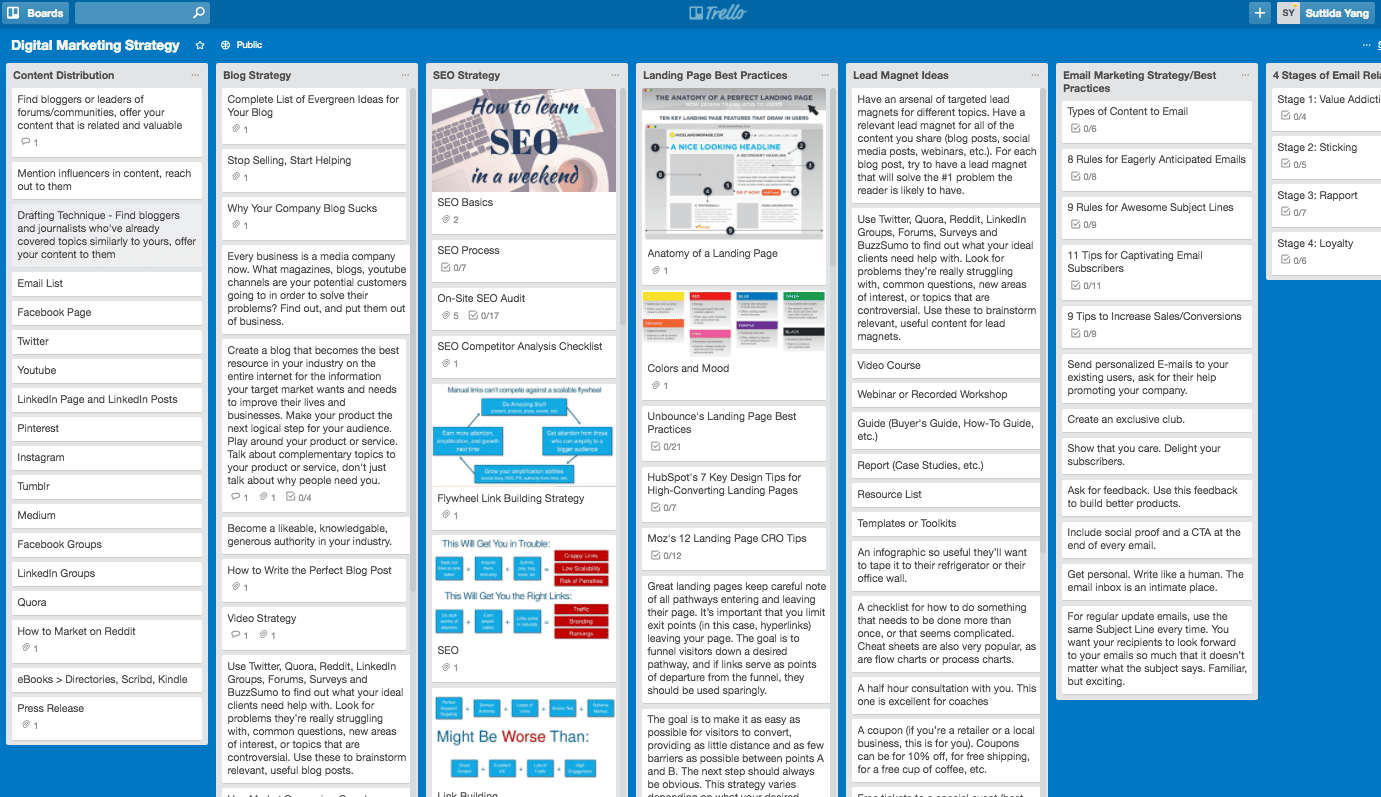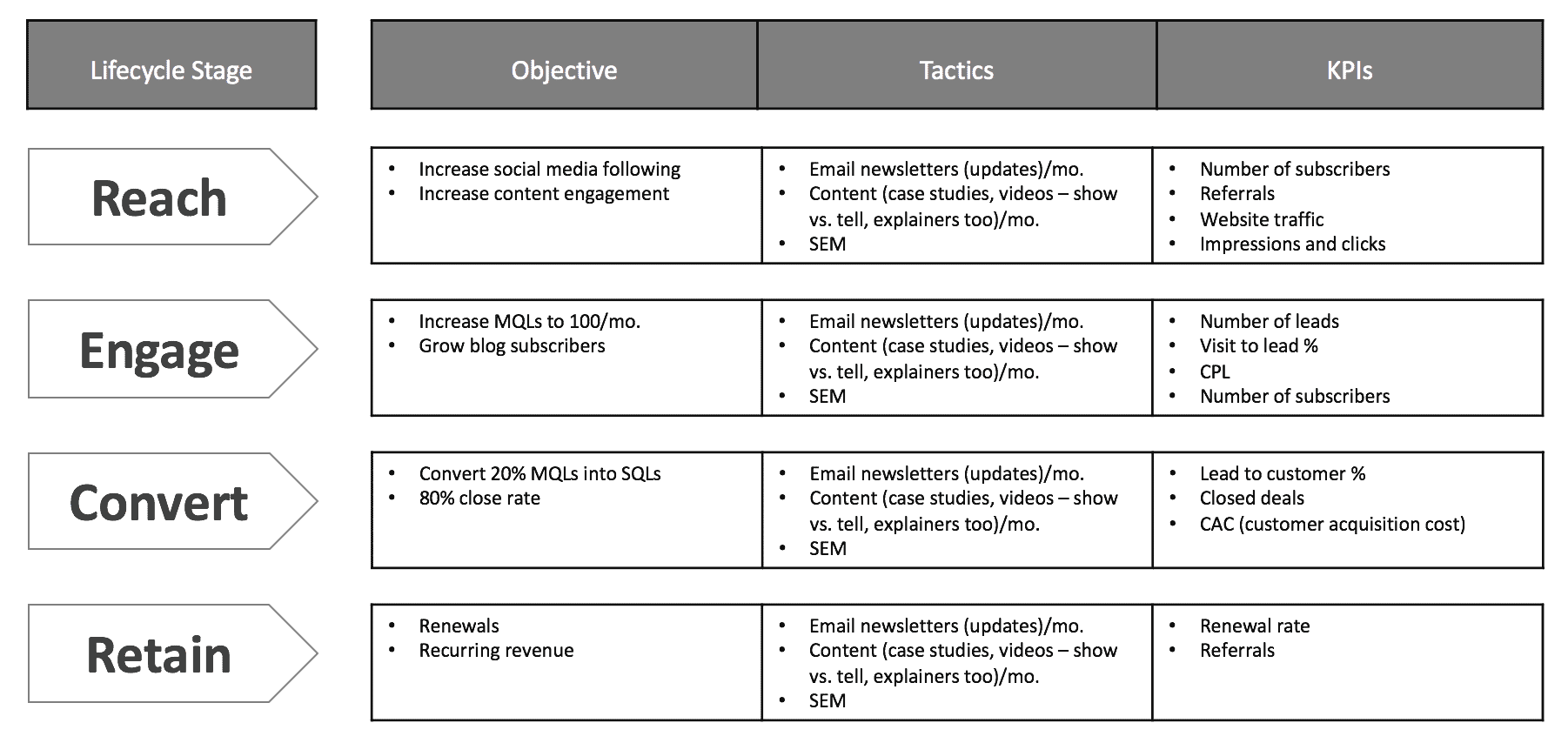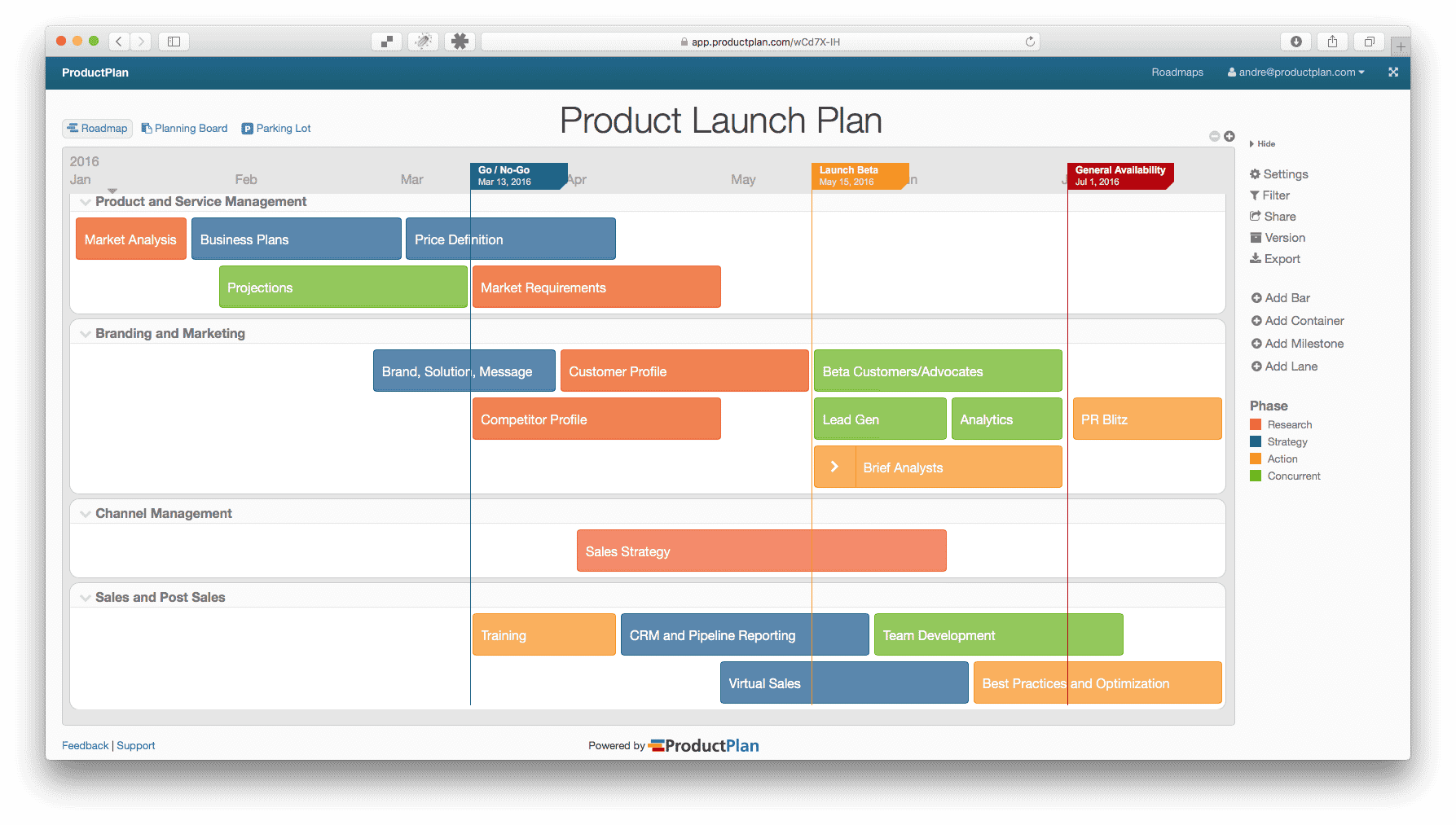Developing a marketing strategy takes its fair share of work. But once the strategy is in place, your next plan of attack is to make sure you have a roadmap clearly outlined.
Having a roadmap will help guide how you will achieve milestones, track your progress, and foster the marketing strategy, which should align with business objectives.
A critical key to successfully road mapping your initiatives comes down to focusing on the right mix and then tying that in with KPIs (key performance indicators).
In this blog post, I’ll provide some tips on how to you can build a roadmap when a marketing strategy is in place.
Keep Everything Simple
I can’t stress enough how important it is to make sure you keep everything simple. For starters, look at how you can break down your marketing game plan into the following:
- Channels – social media, SEM, SEO, email, etc.
- Funnel stages – awareness, conversion, transaction, retention
- Lifecycle stages – lead, MQL, SQL, etc.
Here’s an example worth checking:

Attach Metrics to Each Execution
Your executions are only as good as your ability to track and measure the progress. From there, identifying which executions brought in the highest quality of leads down to the ROI will only help you figure out where to spend more of your marketing dollars.

Get Aligned with Product and Sales
One of the biggest challenges I see that still exists out in the marketplace is a project management tool that’s sophisticated, yet simple enough to use (e.g. design, intuitiveness, integration, etc.).
Therefore, be creative with how you map out the initiatives from both product and sales to marketing. This can be an evolving piece of work in of itself, so don’t get too bogged down on getting it perfect. Rather, focus on making it easy to understand and share across the entire company.
A few good tools to look into are Hubspot and SEMRush. Both offer easy to use organizational tools that can be helpful for your team and can help you to track the effectiveness of your campaigns.
The key thing here is to make sure that all of the dependencies are in highlighted and that the departments are on the same page.
Doing so will help with managing projects, time, deliverables, and expectations. Most importantly, it will help streamline cross-departmental communication.
Check out this example by ProductPlan:

Be Flexible
Just as your marketing campaigns will continue to change and be tweaked over time, it is important to instill flexibility within each execution.
Of course, the strategy itself shouldn’t change, but your implementations will. Sometimes, the need for change can also come from things that are outside of your control too (e.g. market demand, market feedback, timing, etc.).
Don’t Lose Sight of the Big Picture
Sometimes when you’re in charge of running one department, it can be hard to keep sight on the big picture, i.e. company’s overall vision. As such, here are a few recommendations to consider:
- Have weekly meetings with teams that directly impact your ability to execute. Make sure you lay out specifics in terms of how these meetings will run. Doing so will ensure the meetings run smoothly and that they don’t cut into productivity.
- Get away from doing busy work that doesn’t produce results.
- With every action taken, be able to definitively show how it will help move the needle and push the company forward.
Final Thoughts
Building out a roadmap for your marketing strategy is a great way to help guide where you’re headed, but remember, taking action and measuring your progress is what’s going to aid your overall success.
A key takeaway is to ensure that progress takes priority over perfection. Nothing speaks louder than getting data points from your target/existing customers and using those data points to make better decisions.






5 Responses